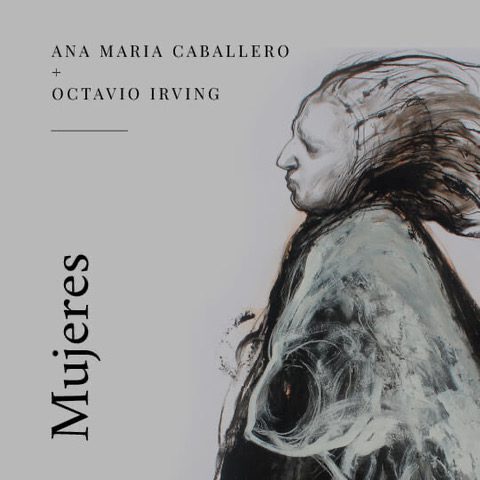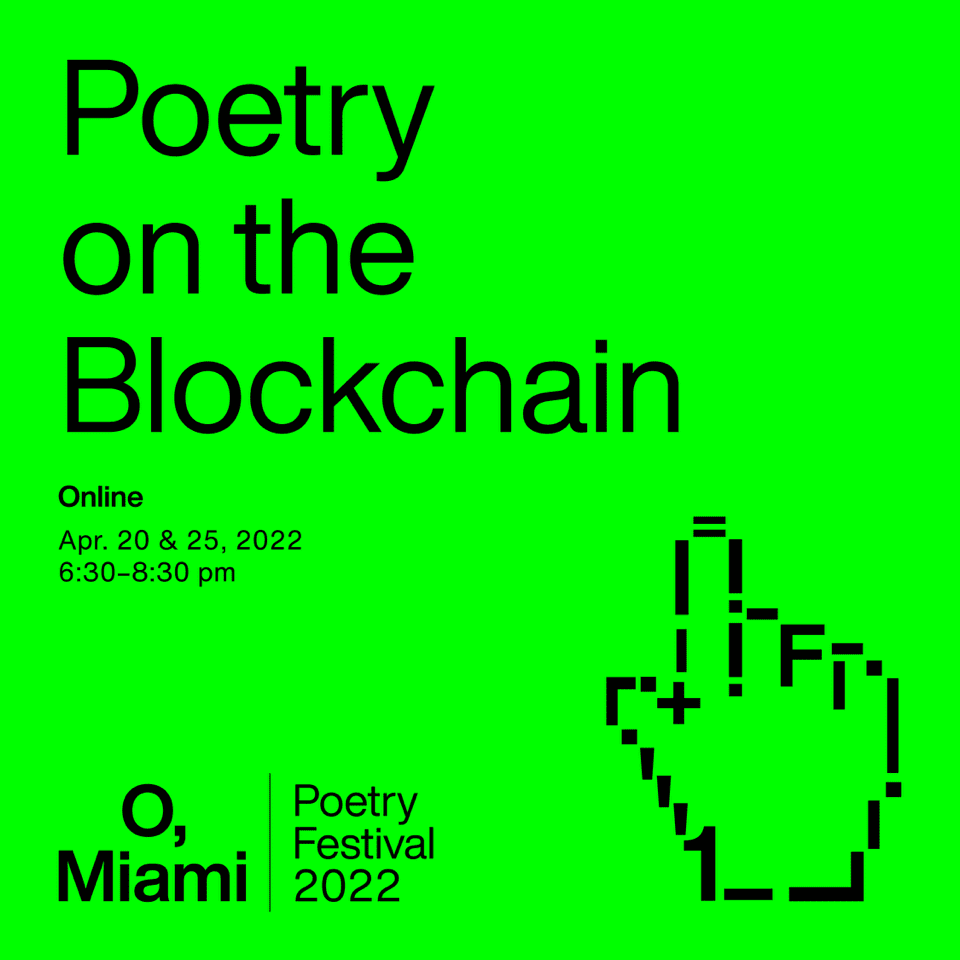Yes, we’re all aware that April is Miami Tech Month. But did you know that this month also marks the annual O, Miami Poetry Festival?
On April 20th and 25th, the worlds of poetry and technology will converge in a two-part online workshop, “Poetry on the Blockchain.” Part one will cover an intro to Web3 and NFTs, while part 2 will empower participants to make a wallet and provide instruction on how to create and sell NFT poems.
You read that right: an enterprising group of poets have been experimenting with showcasing and selling their work as non-fungible tokens. To be fungible or non-fungible, that is the question.
Miami-born, Bogotá-bred, award-winning poet Ana Maria Caballero is one of the two organizers for the workshop. She told Refresh Miami about the origins of NFT poetry – a field she is pioneering on a global scale.
“I’ve lived in Miami many years in and out and saw how Art Basel transformed the city. And I’ve wondered why poetry is not part of this conversation. So when I saw the blockchain, I thought web3 is what poetry needs in order to manifest the value of a poem as a work of art.”
Caballero then went on to co-found theVERSEverse, a gallery where poems are sold as works of art. Poets and artists collaborate to bring NFTs to the market. Caballero describes this fusion of the written word and visual art as a dialogue, giving poetry “an equal seat at the art market table through the renewed interest in digital art thanks to the blockchain and NFTs.”

Often, these NFT poems feature audio components and moving visuals. The idea, according to Caballero: “Let’s have poems speak the language of digital audiences who are hungry for poetry but maybe are not going to read a black and white, two dimensional print all the time.”
“They want to see something different,” she added. This digital form certainly provides novelty.
Alongside Caballero in convening this course is Miami-based technology futurist, artist, and creative Breanna Faye. She is CTO of the Underline and founder of Metarkitex, a collective that creates generative virtual architecture for the Metaverse. Her multimedia work has been featured globally and sold as NFTs as part of the Etherpoems collective.
Faye underscored the collaborative potential of NFTs. “For example, you can have 3 artists collaborate on a single collection or piece – a musician, a visual artist, and a spoken word poet – and make it such that upon sale of the piece each artist receives 1/3 of the total sale price, as well as 1/3 of royalties in perpetuity any time that piece is sold in the future. This is an enormous win for creators.”
Caballero does not expect NFTs to replace the role of publishing houses. Rather, she sees the digital assets as an opportunity for poets to amplify their work and connect with a new, digital-native audience – especially if poets release NFTs with lots of editions and a low price. She also noted that creating NFTs can be more financially advantageous for artists than books, which are not particularly profitable and require an “astronomical” amount of work.
Most of the workshop’s instruction will center on the Tezos blockchain, which has gained particular notoriety for being more environmentally friendly than its alternatives. Also on the agenda for the webinar will be an overview of how web3 communities work more broadly.
“The possibilities are endless,” said Faye. “And the best part is we are just getting started in terms of what is and will be possible.”
Are you interested in learning more about the poetic and literary implications of NFTs? Check out their upcoming workshop, April 20th and 25th from 6:30-8:30pm (online). $15-50, pay what you can.

- Superlogic lands $7.6M strategic round to pioneer the future of loyalty points - April 19, 2024
- AI, climatetech and healthtech reign supreme on Day 1 of eMerge Americas’ 10th anniversary - April 18, 2024
- Brought together by tech, kept together by culture: Miami’s protagonistic role in LatAm’s startup story - April 15, 2024





